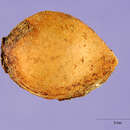pt-BR
nomes no trilho de navegação


Prunus hortulana, called the hortulan plum[3] and wild goose plum,[3] is a fruit shrub in the rose family found in the central United States in: Arkansas, Iowa, Illinois, Indiana, Kansas, Kentucky, Massachusetts, Maryland, Missouri, Nebraska, Ohio, Oklahoma, Tennessee, Texas, Virginia, West Virginia.[3][4] Populations east of the Appalachians probably represent naturalizations.[5]
Prunus hortulana is a deciduous tree with a trunk diameter of up to 15 centimetres (6 inches) and an overall height of 6 metres (20 feet) or more. The leaves are green and hairless on the top, but hairy on the underside. White flowers in clusters of 2–4 appear in the spring. The edible fruits[6] are red or yellow drupes with white dots, reportedly sweet and pleasant tasting. The species grows in upland forests and near streams.[7][8][9]
There are several domesticated cultivars and hybrids with other Prunus.[10]
Prunus hortulana, called the hortulan plum and wild goose plum, is a fruit shrub in the rose family found in the central United States in: Arkansas, Iowa, Illinois, Indiana, Kansas, Kentucky, Massachusetts, Maryland, Missouri, Nebraska, Ohio, Oklahoma, Tennessee, Texas, Virginia, West Virginia. Populations east of the Appalachians probably represent naturalizations.
Prunus hortulana is a deciduous tree with a trunk diameter of up to 15 centimetres (6 inches) and an overall height of 6 metres (20 feet) or more. The leaves are green and hairless on the top, but hairy on the underside. White flowers in clusters of 2–4 appear in the spring. The edible fruits are red or yellow drupes with white dots, reportedly sweet and pleasant tasting. The species grows in upland forests and near streams.
There are several domesticated cultivars and hybrids with other Prunus.
Prunus hortulana, le prunier hortulan, est un arbuste fruitier de la famille des Rosaceae. On le trouve en Amérique du Nord.